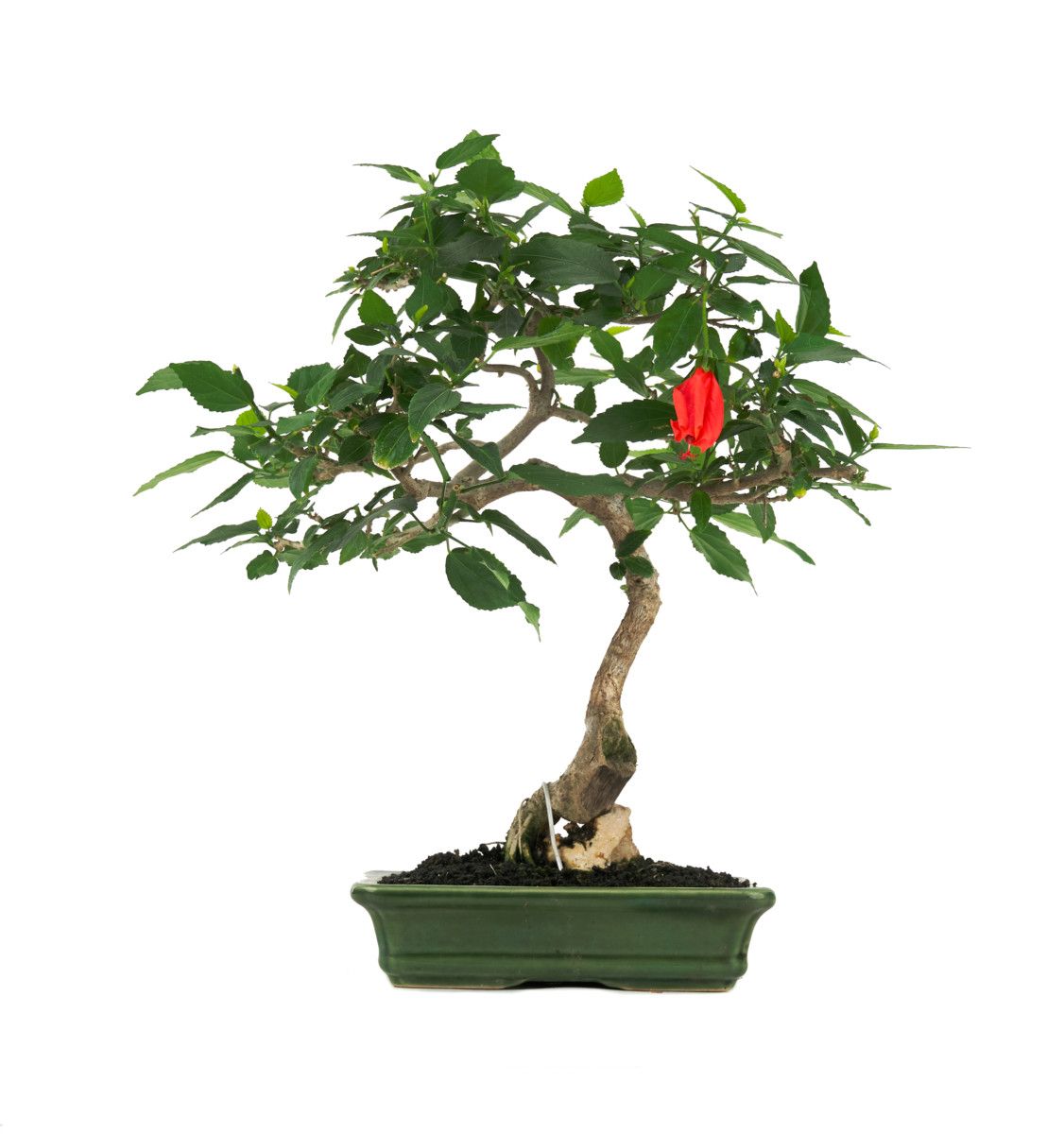Characteristics
Evergreen shrub, very branched. Leaves heart-shaped, serrated at the edges and covered with small hairs. Intense red flowers, highlighting the exceptional stamen above the corolla
Location
The bonsai Malvaviscus arboreus can be placed indoors in a very well-lit place, away from sources of air conditioning. If it is located outside, it must be protected from the heat of summer and frost in winter.
Watering
the needs of this species are moderate in nature. Water abundantly when the first two centimetres of substrate are dry.
Fertilization
from spring to autumn, with a break in summer. In case of abundant flowering, it is recommended to strengthen the fertilizer with potassium and phosphorus, especially in spring and autumn.
Re-potting
every 3 years, at the end of the winter before the new germination
Substrate
Akadama 100% or mixed with volcanic clay (30% clay). It is a tree that likes the organic matter and a slight acidity of the soil, so you can mix the peat blonde to avoid a pH too alkaline.
Pruning and pinching
Pruning
The structural size can be made in winter.
Pinching
We will let the tree out its branches and grow to form about 4 or 6 leaves. We will cut then leaving only the first two or three, from which new shoots will emerge.
Wiring
spring and autumn.
Curiosities
Malvaviscus arboreus is an attractive plant for many species of butterflies. Its medicinal character is appreciated as diuretic, antibacterial and coagulant

